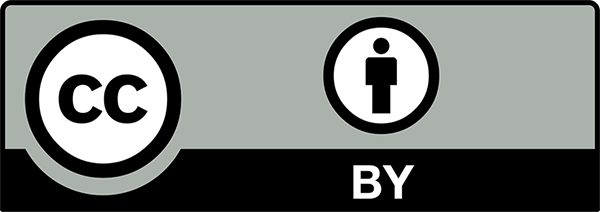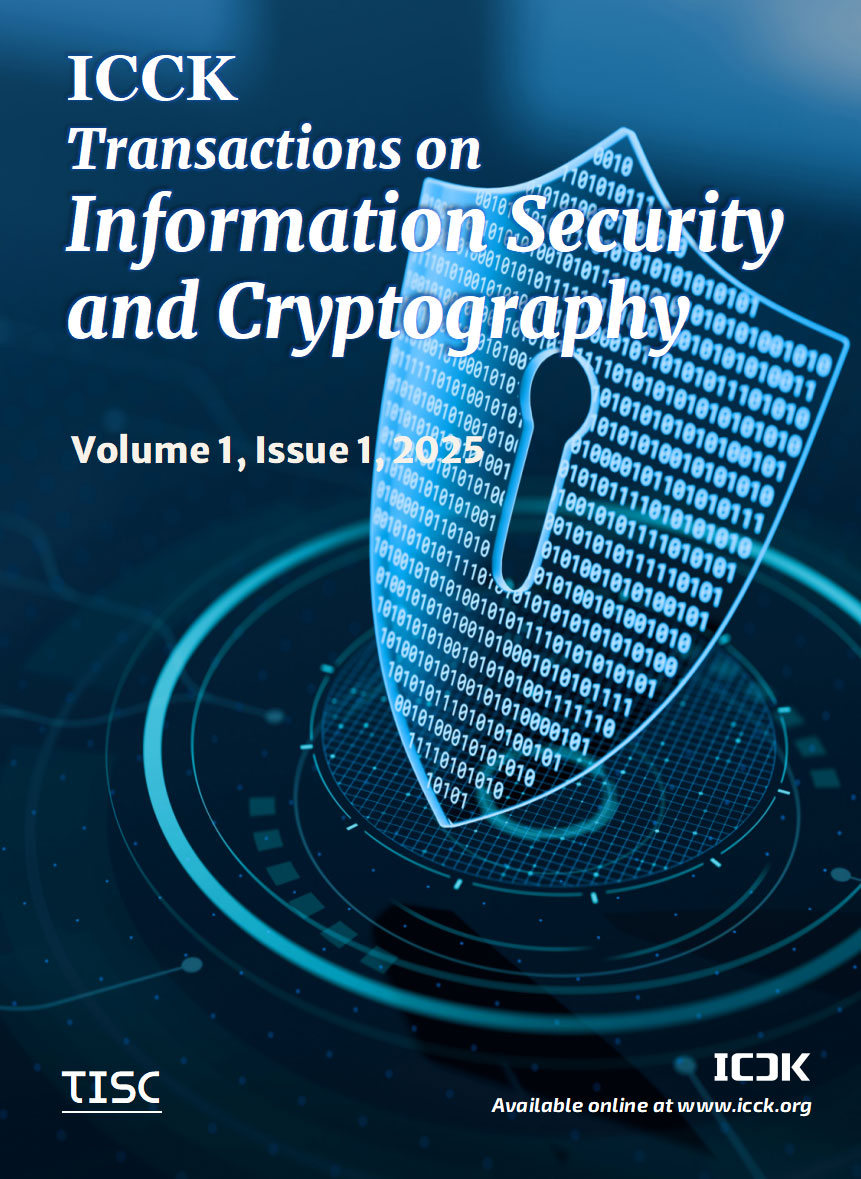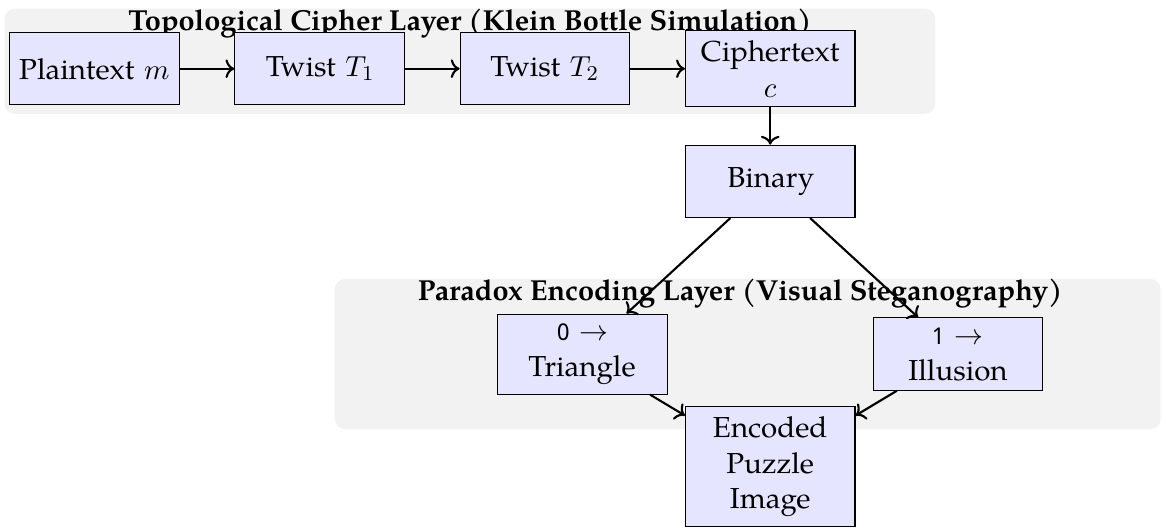Abstract
This paper presents the Singularity Cipher, a novel cryptographic-steganographic framework that integrates topological transformations and visual paradoxes to achieve multidimensional security. Inspired by the non-orientable properties of the Klein bottle—constructed from two Möbius strips—the cipher applies symbolic twist functions to simulate topological traversal, producing high confusion and diffusion in the ciphertext. The resulting binary data is then encoded using perceptual illusions, such as the missing square paradox, to visually obscure the presence of encrypted content. Unlike conventional ciphers that rely solely on algebraic complexity, the Singularity Cipher introduces a dual-layer approach: symbolic encryption rooted in topology and visual steganography designed for human cognitive ambiguity. This combination enhances both cryptographic strength and detection resistance, making it well-suited for secure communication, watermarking, and plausible deniability in adversarial environments. The paper formalizes the architecture, provides encryption and decryption algorithms, evaluates security properties, and compares the method against classical, post-quantum, and steganographic approaches. Potential applications and future research directions are also discussed.
Data Availability Statement
Data will be made available on request.
Funding
This work was supported without any funding.
Conflicts of Interest
The authors declare no conflicts of interest.
Ethical Approval and Consent to Participate
Not applicable.
Cite This Article
APA Style
Weinberg, A. I. (2025). Singularity Cipher: A Topology-Driven Cryptographic Scheme Based on Visual Paradox and Klein Bottle Illusions. ICCK Transactions on Information Security and Cryptography, 1(1), 38–53. https://doi.org/10.62762/TISC.2025.186894
Publisher's Note
ICCK stays neutral with regard to jurisdictional claims in published maps and institutional affiliations.
Rights and Permissions

Copyright © 2025 by the Author(s). Published by Institute of Central Computation and Knowledge. This article is an open access article distributed under the terms and conditions of the Creative Commons Attribution (CC BY) license (
https://creativecommons.org/licenses/by/4.0/), which permits use, sharing, adaptation, distribution and reproduction in any medium or format, as long as you give appropriate credit to the original author(s) and the source, provide a link to the Creative Commons licence, and indicate if changes were made.


 Submit Manuscript
Edit a Special Issue
Submit Manuscript
Edit a Special Issue


 Copyright © 2025 by the Author(s). Published by Institute of Central Computation and Knowledge. This article is an open access article distributed under the terms and conditions of the Creative Commons Attribution (CC BY) license (https://creativecommons.org/licenses/by/4.0/), which permits use, sharing, adaptation, distribution and reproduction in any medium or format, as long as you give appropriate credit to the original author(s) and the source, provide a link to the Creative Commons licence, and indicate if changes were made.
Copyright © 2025 by the Author(s). Published by Institute of Central Computation and Knowledge. This article is an open access article distributed under the terms and conditions of the Creative Commons Attribution (CC BY) license (https://creativecommons.org/licenses/by/4.0/), which permits use, sharing, adaptation, distribution and reproduction in any medium or format, as long as you give appropriate credit to the original author(s) and the source, provide a link to the Creative Commons licence, and indicate if changes were made. 